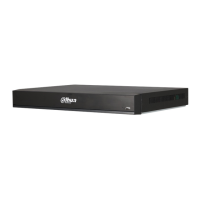Local Configurations 244
Figure 5-217
Change the settings for group name, memo, and authority. Step 4
Click OK to complete the settings. Step 5
5.17.2.3 Deleting a Group
Select Main Menu > ACCOUNT > GROUP. Step 1
The GROUP interface is displayed. See Figure 5-218.
Figure 5-218











